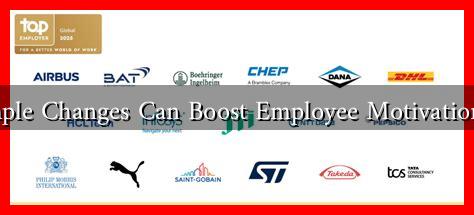-
Table of Contents
What Simple Changes Can Boost Employee Motivation in 2025
As we move into 2025, the landscape of work continues to evolve, influenced by technological advancements, shifting employee expectations, and the ongoing impact of the global pandemic. Employee motivation has become a critical focus for organizations aiming to enhance productivity, reduce turnover, and foster a positive workplace culture. This article explores simple yet effective changes that can significantly boost employee motivation in the coming year.
Understanding Employee Motivation
Employee motivation refers to the level of energy, commitment, and creativity that a company’s workers bring to their jobs. It is influenced by various factors, including job satisfaction, recognition, and the work environment. According to a Gallup report, organizations with highly engaged employees see 21% greater profitability. Therefore, understanding what drives motivation is essential for any business looking to thrive in 2025.
1. Flexible Work Arrangements
One of the most significant shifts in the workplace has been the move towards flexible work arrangements. In 2025, offering options such as remote work, flexible hours, and hybrid models can greatly enhance employee motivation.
- Remote Work: A study by Buffer found that 98% of remote workers would like to work remotely at least some of the time for the rest of their careers. Allowing employees to work from home can lead to increased job satisfaction and productivity.
- Flexible Hours: Flexibility in work hours allows employees to balance personal and professional responsibilities, reducing stress and increasing motivation.
2. Recognition and Rewards Programs
Recognition is a powerful motivator. In 2025, organizations should implement structured recognition and rewards programs that acknowledge employee contributions.
- Peer Recognition: Platforms like Bonusly allow employees to recognize each other’s efforts, fostering a culture of appreciation.
- Performance-Based Rewards: Offering bonuses, promotions, or even simple thank-you notes can significantly boost morale and motivation.
3. Opportunities for Professional Development
Investing in employee growth is crucial for motivation. In 2025, companies should prioritize professional development opportunities.
- Training Programs: Providing access to online courses or workshops can help employees enhance their skills and feel valued.
- Career Advancement: Clear pathways for promotion and development can motivate employees to invest in their roles.
4. Fostering a Positive Work Environment
The work environment plays a significant role in employee motivation. A positive, inclusive, and supportive workplace can lead to higher engagement levels.
- Open Communication: Encouraging open dialogue between management and employees can create a sense of belonging and trust.
- Diversity and Inclusion: A diverse workforce fosters creativity and innovation, which can enhance motivation. Companies like Google have implemented diversity initiatives that have shown positive results in employee satisfaction.
5. Emphasizing Work-Life Balance
In 2025, promoting a healthy work-life balance will be more important than ever. Employees who feel that their personal lives are respected are more likely to be motivated and engaged.
- Encouraging Time Off: Companies should promote the use of vacation days and mental health days to prevent burnout.
- Wellness Programs: Implementing wellness initiatives, such as fitness challenges or mental health resources, can show employees that their well-being is a priority.
Conclusion
As we look ahead to 2025, organizations must adapt to the changing needs and expectations of their workforce. Simple changes such as offering flexible work arrangements, implementing recognition programs, investing in professional development, fostering a positive work environment, and emphasizing work-life balance can significantly boost employee motivation. By prioritizing these strategies, companies can create a motivated, engaged, and productive workforce ready to tackle the challenges of the future.
For more insights on employee motivation and workplace culture, consider exploring resources from Gallup and Buffer.


